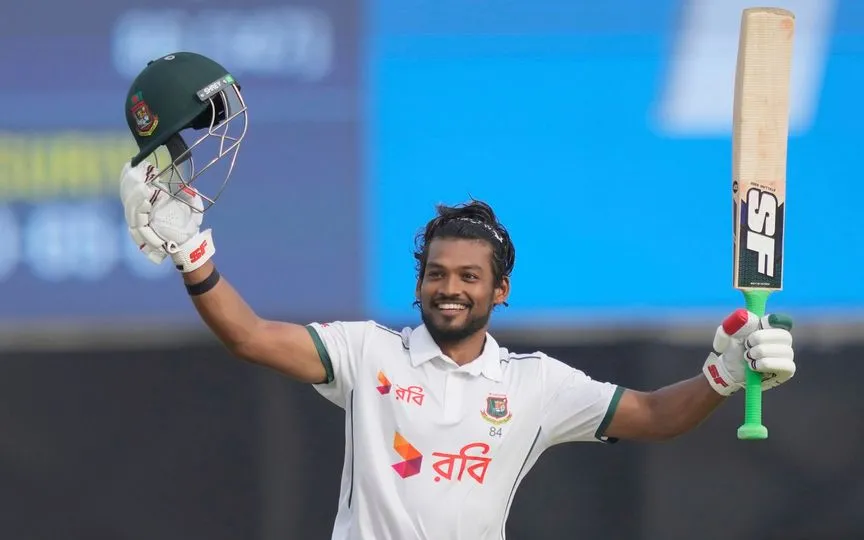![Rishabh Pant in Headingley Test and in IPL 2025 [Source: AP Photos | @garrywalia_/x.com]](https://onecricketnews.akamaized.net/parth-editor/oc-dashboard/news-images-prod/1750510771032_pant_test_t20.jpg?type=hq) Rishabh Pant in Headingley Test and in IPL 2025 [Source: AP Photos | @garrywalia_/x.com]
Rishabh Pant in Headingley Test and in IPL 2025 [Source: AP Photos | @garrywalia_/x.com]
Rishabh Pant, one of the most dynamic figures in the current Indian cricket scene, stands as one of modern cricket's most intriguing contradictions.
A naturally aggressive left-handed wicketkeeper-batter has redefined Test cricket with his fearless approach, yet somehow, he struggles to translate the same impact into T20 cricket.
The stark contrast in his performances across formats presents a fascinating case study of how different cricketing demands can affect the players.
The Numbers That Tell A Story
Test Cricket Excellence
Rishabh Pant's numbers in the longest format of the game are more than impressive. He has batted in 76 innings in the 44 matches that he has played and has scored 3,082 runs in them at an average of 43.40 with seven centuries and 15 half-centuries.
Notably, Pant has broken MS Dhoni's record to become the Indian wicketkeeper with most Test centuries. Five of his seven centuries have come away from home, showcasing his ability to adapt to different conditions. His strike rate of 73.69 also highlights his ability to score runs quickly and leave an impact in a match while maintaining consistency.
T20 Struggles
The contrast becomes noticeable when examining his T20 numbers. In overall T20 cricket, Pant has scored 5,291 runs at an average of 31.30. In IPL 2025, despite being the most expensive player in the history of the tournament at ₹ 27 Cr, his numbers failed to live up to expectations.
In the IPL, Pant has played 125 matches and has scored 3,553 runs in them at an average of 34.16 and a strike rate of 147.61. While these numbers are good, his IPL 2025 stats tell the story of his recent and more prominent struggles in the format.
In the latest edition of the Grand League, Pant scored 269 runs in 14 matches at an average of 24.45. Notably, 118 of these runs came in the last game of the tournament, when his team was already out of the competition.
The Format Paradox: Why Test Success Doesn't Translate Into T20s For Pant
![Rishabh Pant [Source: AP Photos]](https://onecricketnews.akamaized.net/parth-editor/oc-dashboard/news-images-prod/1750510912746_pant_headingley.jpg?type=mq) Rishabh Pant [Source: AP Photos]
Rishabh Pant [Source: AP Photos]
Pressure and Time Dynamics
The fundamental difference between Test cricket and T20 lies in the time pressure. In Tests, Pant has the luxury of playing himself in, assessing conditions, and then unleashing his natural aggression when the situation demands.
T20 cricket offers no such luxury to him. In this format, every ball matters, and the pressure to score immediately often leads to rushed decision-making. Pant's instinct to be aggressive, which serves him well in Tests after he has settled down, becomes a liability when he needs to go after the bowling from ball one.
The Consistency Challenge
Modern T20 analysis reveals that both dot balls and singles signify falling behind the scoring rate, rendering boundary hitting a necessity. For a naturally aggressive batter like Pant, this creates a boom-or-bust scenario where small margins separate success from failure.
Role and Expectations
Pant's best IPL season came in 2018 when he scored 684 runs at an average of 52.61 and a strike rate of over 170. This suggests that he can be equally, if not more, effective in the T20 format.
However, the increased expectations and pressure of being a marquee player, captaincy and record signing seem to have affected his natural game.
Earlier as the skipper of the Delhi Capitals, and now as the leader of the Lucknow Super Giants, the batter carries additional responsibility that is probably affecting his batting approach.
The Mental Game Factor
![Rishabh Pant in IPL 2025 [Source: @Rajiv1841/x.com]](https://onecricketnews.akamaized.net/parth-editor/oc-dashboard/news-images-prod/1750511048102_pant_ipl.jpg?type=mq) Rishabh Pant in IPL 2025 [Source: @Rajiv1841/x.com]
Rishabh Pant in IPL 2025 [Source: @Rajiv1841/x.com]
Risk-Reward Calculations
Test cricket rewards patience, followed by aggression. Pant's mental makeup seems perfectly suited to this rhythm as he looks like a player who can absorb pressure, wait for the right moment and then launch himself.
On the other hand, T20 cricket demands immediate risk-taking without the safety net of time. The shortened format compresses the risk-reward calculation into split-second decisions, where Pant's natural tendency towards aggressive strokeplay can backfire more easily.
Situation Management
Pant excels in Test situations where his team needs him to either build an innings or launch a counter-attack from a position of relative stability.
His Test centuries often come in crucial situations where his team needs rescue acts or declarations set-up.
In T20s, the situations are more fluid and require constant adaptation to changing required rates, field settings, and bowling strategies within the compressed time frame. This rapid situation management and constant adjustments do not necessarily align with Pant's natural batting tempo.
Conclusion
Rishabh Pant's contrasting fortunes across formats highlight the evolving complexity of cricket as a game.
His Test success is rooted in his ability to combine patience with explosive power when the situation demands. However, T20 cricket's immediate pressure and reduced margin of error constrain the very aggression that makes him special in the longest format.
.jpeg)
.jpg?type=mq)



